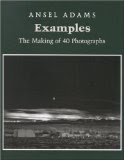Just wanted to get this link posted first as I have gotten a lot of questions on it:
If you have a limited budget and want to take better photoggraphy, where do you start?Ok, now on Event Photography. Someone from LinkedIn who had trouble getting good shots at event photography asked me if I would recommend a few camera lens that would be more suitable and what I would do differently-a tip or two. She was using her 50mm and her 70-200mm lens handheld, and her shots had all come out "trail-marked" as she puts it.
Event photography is always challenging for photographers because one has to deal with insufficient light, distance if one can't get close to podium, any motion on stage of the subject and if there is light, the type of lighting and if so making sure the white balance is set correctly. In most cases, flash is not allowed once the event has commenced.
If one could get close to the podium, within a 6-10ft, and assuming the podium/stage is sufficiently lit then a 50mm f/1.8 or 50mm f/1.4 or a 100mm f/2 (depending on what you are shooting) on a monopod or tripod should do the job. Another thing I would do is set the camera to take at least 3 frames in succession so you don't miss any shot.
If you can't get close to the podium, and the podium is sufficiently lit, then the most suitable lens in my opinion is the Canon 100mm f/2. It is lighter than the 70-200mm f/2.8 IS (it is heavy and you would stil need a tripod collar for the white lens which would add further to the weight). Definitely still use a tripod otherwise there is no chance of getting a decent shot in an indoor event. I know of music event photographers who are extremely happy with their 100mm f/2. It is fast lens, it is not heavy, it is inconspicious as compared to the signature white lens
"Trailmarked" or "light streaks" are a result of slow shutter speed (not enough light, or camera shake, or a combination of the two). The shutter speed is not fast enough to freeze any slight motion of the subject. As a rule of thumb, you want to be shooting at shutter speed no less than the focal length of your camera lens if you don't have a tripod: so no less than 1/60 with a 50mm f/1.8 and no less than 1/125 on a 100mm f/2 lens.
If the above still doesn't give you a decent shot, then the only solution is to get upfront, where you have light and ask the subject to pose for a shot beforehand :) or ask for permission to use flash.
 Canon EF 100mm f/2 USM Telephoto Lens for Canon SLR Cameras
Canon EF 100mm f/2 USM Telephoto Lens for Canon SLR CamerasGet it at
Bhphotovideo or at
or Amazon
The 100mm f/2 lens is also available for Nikon SLR. I have always preferred prime lens over my zoom lens whenever possible for the simple reason that what you give up in flexibility you get back plenty back in image quality not mentioning that prime lens are so much less expensive than comparable zoom. Using prime lens forces me to think more, compose with my feet and do photography in the ways of the Grand Masters when all they had were the old pancake lens and a 35mm or 50mm in the case of Pentax and look at those wonderful timeless photos from the Great Depression!!.



